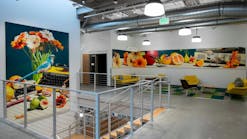Service robots, which are robots serving human needs beyond the factory floor, are playing an increasingly important role in many aspects of human life. These robots come in many designs and perform tasks that range from aerial surveillance, bomb disposal, farming, and warehouse logistics to teaching children and assisting the elderly. They use machine vision and image processing components, subsystems, and technologies to image, store, and interpret data about the world around them, and perform actions based on the data.
Vision for Service Robots is a NEW REPORT from Vision Systems Design that provides a comprehensive review of the technologies, markets, and opportunities for suppliers of vision components, the researchers and integrators who are building service robots, and companies and organizations interested in entering the market. This groundbreaking 120-page report is based on extensive interviews and original research compiled over eight months by Adil Shafi, well-known authority on service robots and president of Advenovation, and Conard Holton, Editor of Vision Systems Design. It identifies multiple near-term market opportunities for vision components and systems totaling several billion dollars, and opportunities in the longer term that promise to be even greater.
Many countries and regions are avidly fostering research and development in this field. They are doing so because, while industrial robots are sold in the tens of thousands per year, service robots will offer a volume of unit sales ultimately in the millions. Many of the companies, university labs, and government organizations developing service robots believe that vision will provide a critical technical and market advantage. The Vision for Service Robots report includes an extensive directory of organizations involved in service robot manufacturing, research and development as well as an overview of their projects and links to key resources and websites.
With the exceptions of many toys and simple domestic robots such as vacuuming robots, the majority of service robots require some sort of vision system. The related components, subsystems, and software range from simple 2-D CMOS sensors to complex subsystems capable of 3-D imaging and pattern recognition. The vision software needed to understand these images and provide robotic feedback is complex and evolving rapidly.
Some of the primary vision technologies used in service robots are: structured light systems, two-camera stereo systems, time-of-flight sensors, lidar, and single-lens camera systems. Other sensing/locating technologies may be combined with the vision components to provide even more information to the robots, including GPS navigation, radar, sonar, and inertial guidance. For more sophisticated robots, simultaneous localization and mapping (SLAM) is critical to build maps of unknown environments or to update maps within known environments, while at the same time keeping track of the current location of the robot.
In financial terms, high-end vision systems for UAVs is the single largest service robot market, although the technical requirements are challenging and opportunities often limited to working with established government contractors. Conversely, relatively simple vision systems for robots in the office or warehouse offer some of the fastest growing opportunities, as do vision systems in robots used for education and research, and for simple home surveillance.
This is an exciting and dynamic time for service robots. With the help of machine vision, these robots are gaining widespread commercial and personal acceptance as they assist humans in almost every aspect of life.





